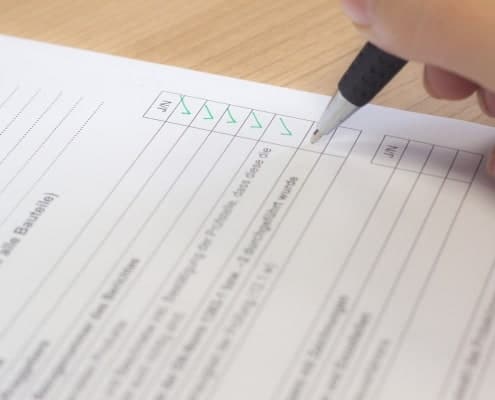To ensure a safe food production process, all food and agricultural companies are required to work with a food safety system. This obligation applies to anyone dealing with food or feed.
In the Netherlands, the Dutch Food and Consumer Product Safety Authority (NVWA) checks for correct application. It is up to the companies themselves to decide how to comply with hygiene rules within such a food safety system. You can opt for your own food safety plan, or, for example, for a system such as the HACCP.
What is the HACCP, how do you make a proper hazard analysis with it, and how do you avoid marking every (potential) deviation as a hazard? We will explain it to you. You can read our explanation below.
The HACCP is a food safety system which can be used by companies dealing with food products.
The abbreviation HACCP stands for: Hazard Analysis and Critical Control Points. This food safety system is a form of risk analysis. It is a European standard which is also used outside Europe, and which companies can use to ensure that the entire process surrounding production and delivery of food products involves as little risk as possible for end users.
These include three types of hazards:
Not all risks are preventable, and in principle this should not be the aim of a risk analysis. Some hazards are also more ‘acceptable’ than others. The HACCP method allows us to eliminate, prevent or reduce relevant hazards to acceptable levels in a structured way.
If an organisation does not comply with safety standards, there can be several consequences. The most common are fines and more frequent audits until it appears that everything is in order.
With correct HACCP management and HACCP management software, you will ensure that unpleasant consequences – for both yourself and your end user – are avoided.
HACCP consists of 7 basic principles as described in the Codex Alimentarius. This Codex Alimentarius is a US organisation in which 186 countries and the European Union participate. All participating countries and the EU can include it in their legislation, while companies can voluntarily comply with standards.
Within the HACCP guidelines, organisations are free to draw up their own food plan, or use an approved hygiene plan from the relevant sector. We can imagine that this often feels like a ‘must do‘ and we see this more often with this kind of obligation. As a result, while the HACCP analysis may initially be completed properly, it then gets lost and is not continuously updated.
If you let quality be the starting point of your HACCP analysis, you will be in a different position yourself. This produces different results than if you start from obligation. With a thorough, continuous system of checks, you can guarantee the quality of your products much better. Use the PDCA cycle for this.

Suppose your goal is to deliver quality. In order to do so, it is important to eliminate hazards as much as possible. But as said, when analysing risks, it is virtually impossible to exclude every risk, and thus every hazard.
Moreover, there is another factor at play in the food chain: deviations. Although deviations result in a different quality, it does not automatically mean that it is dangerous. So the question is: to what extent can you and do you want to eliminate deviations, and at what cost?
Of course, in this consideration you always take what the standard obliges you to do into account, but within this there is some room for manoeuvre. After all, HACCP is based on 7 basic principles:
Under step 1 and step 2, we actually see what we mentioned earlier: not every risk is or becomes an immediate hazard.
Anything that does not become a hazard, such as deviations that might cause a different taste or appearance but are otherwise not dangerous, does not need to be so strictly controlled in HACCP.
Sometimes it is enough to reduce the deviation to an acceptable level. This is also called the critical limit under step 3. Here again, you determine what is dangerous (critical) and what is not dangerous but can still be a deviation.

It is always important to follow and test HACCP standards to ensure compliance. This is perfectly possible with internal audits that you carry out using questionnaires. An audit management system is a welcomed support in this.
Want to know how an audit management system can support your organisation in keeping your HACCP analysis up to date? Or how you can record instructions properly so that they can be followed by everyone? Our experts will be happy to discuss this with you.
Request the brochure to have all information conveniently at hand.
Want to see what Zenya can do for your organisation? Request a free demo.
Contact our experts. We are happy to think along with you.